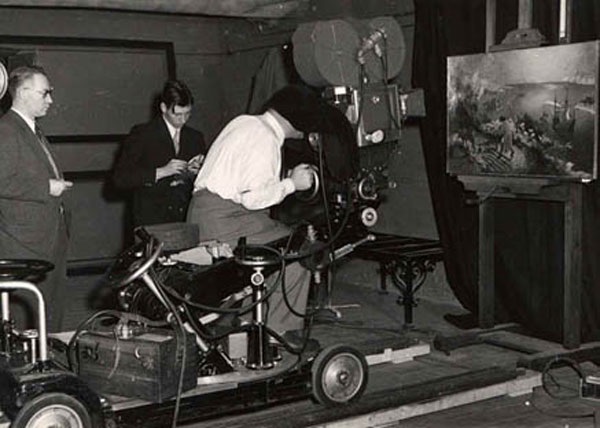La fenêtre ouverte
-
Réalisé par Henri Storck • Écrit par Henri Storck
-
France, Royaume-Uni, Belgique • 1952 • 18 minutes • 35 mm • Couleur
- Réalisation :
Henri Storck - Écriture :
Henri Storck - Image :
Frank Kingston, Cyril J. Knowles, Arthur Lemming - Son :
Coen Bouwhuis, Kees Krienselocker, Jan Wiegel - Montage :
Henri Storck - Musique originale :
Georges Auric
- Production (structure) :
Artifex Film - Coproduction :
Prociné, Crown Film Unit, Films d'Ariel - Ayant droit :
Artifex Film
- N° ISAN :
non renseigné
Résumé
"Un des premiers films européens : une commande culturelle qui va permettre à Henri Storck de continuer une œuvre personnelle, c'est-à-dire d'aborder un tableau comme un cinéaste, d'entrer dans la peinture et dans le sujet en les cadrant autrement, en leur ouvrant l'écran comme un champ fictionnel et émotionnel. Le tableau sort de son cadre pour entrer dans celui du cinéma. Double ouverture, la première est historique. C'est le sujet même du film : 59 tableaux de paysage vont sortir de la fenêtre ouverte de Marie, et l'on passera du sacré au profane, de l'intérieur et de l'intériorité à la représentation du monde et de la nature. La seconde est liée à la représentation : comment concilier l'espace d'un tableau et l'espace d'un photogramme ? Ceci posé, on est convié à un voyage culturel par paysages interposés, de Bosch à Turner, des primitifs flamands à Manet, de Rubens à Monet. La chronologie est respectée, mais il y a le bonheur de l'œil : le rythme du film laisse le temps du regard, le bonheur de voir... L'œil est ravi. Parfois l'oreille est saturée. Mais Henri Storck gagne ses galons de grand imagier qui sait voir dans les tableaux les détails qui font récit."
(Fonds Henri Storck)
"One of the first European films: a cultural commission that allowed Henri Storck to continue a personal work, that is to say, approaching a painting as a filmmaker, entering into the painting and the subject by framing them differently, offering them the screen as a fictional and emotional field. The painting leaves its own frame to enter that of the cinema. A double opening. The first is historical. It is the very subject of the film: 59 landscape paintings come out of Marie's open window, we go from the sacred to the profane, from the interior and interiority to the representation of the world and nature. The second is linked to representation: how to reconcile the space of a painting and the space of a photogram? Assuming this to be the case, we are invited on a cultural tour through various countries. From Bosch to Turner, from the Flemish primitive artists to Manet, from Rubens to Monet. The chronology is respected but there is the joy of seeing. The rhythm of the film gives the eye time to linger... The eye is delighted. Sometimes the ear is saturated. But Henri Storck earns his stripes as a great image-maker for knowing which details in the paintings tell a story."
(Fonds Henri Storck)
Mot(s)-clé(s) thématique(s)
Comment avoir accès au film ?
-
Édition DVD
- Il n'existe pas d'édition DVD à notre connaissance
-
Accès VOD
- Il n'existe pas d'accès en VOD à notre connaissance
- Distribution
- Aide sur les moyens d'accéder à un film
